On View
See the Provocative A.I. Works in a New Show at the Ford Foundation Gallery That Turn a Critical Eye on the Tool’s Promise—and Its Limits
"What Models Make Worlds" surfaces A.I.'s encoded biases through the works of some 15 artists.
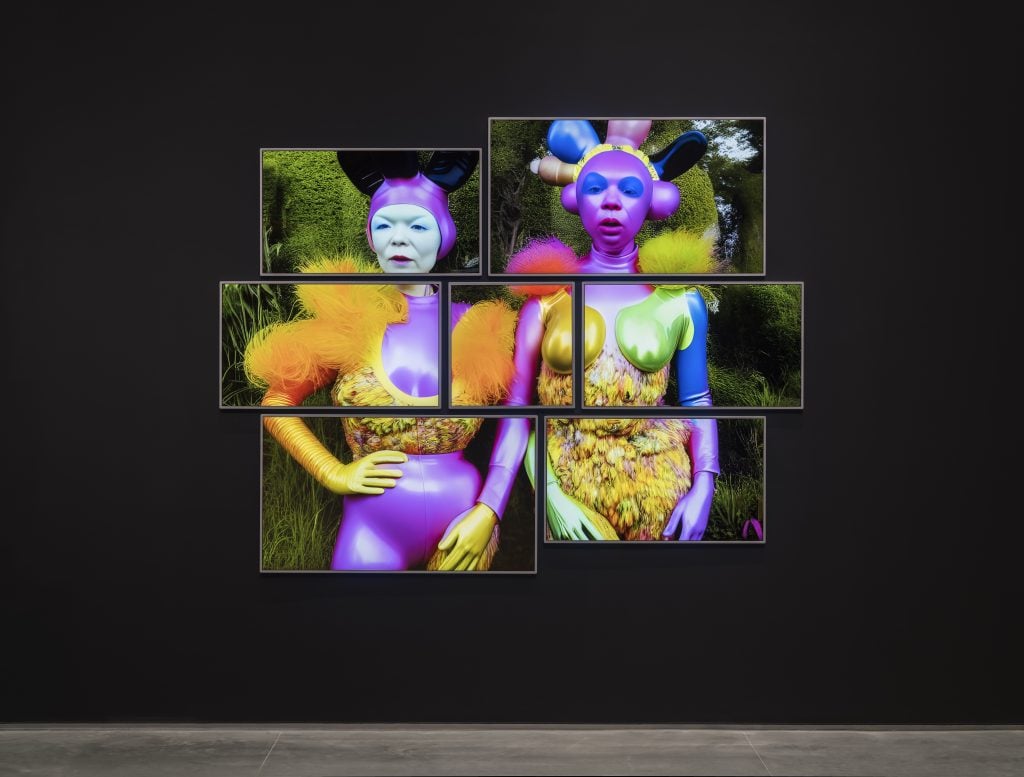
"What Models Make Worlds" surfaces A.I.'s encoded biases through the works of some 15 artists.

Min Chen

A new exhibition at the Ford Foundation Gallery is shining new, critical light on artificial intelligence—not just as a hot new tool for artists, but as a system with encoded, and potentially harmful, biases.
“What Models Make Worlds: Critical Imaginaries of A.I.” brings together more than 15 artists whose A.I.-assisted works probe the limits of the technology and envision richer, more diverse models. A.I., after all, is far from a value-neutral tool, but one that replicates the prejudices of the humans that coded it. If A.I. is poised to reshape our digital horizon, the show asks, how just or equitable will that future be?
“Generative A.I. is Janus-faced,” said Mashinka Firunts Hakopian, the show’s co-curator. “On the one hand, it can steer us away from an anthropocentric model of creativity; on the other, it often operates through extractivist labor practices and biased datasets.”
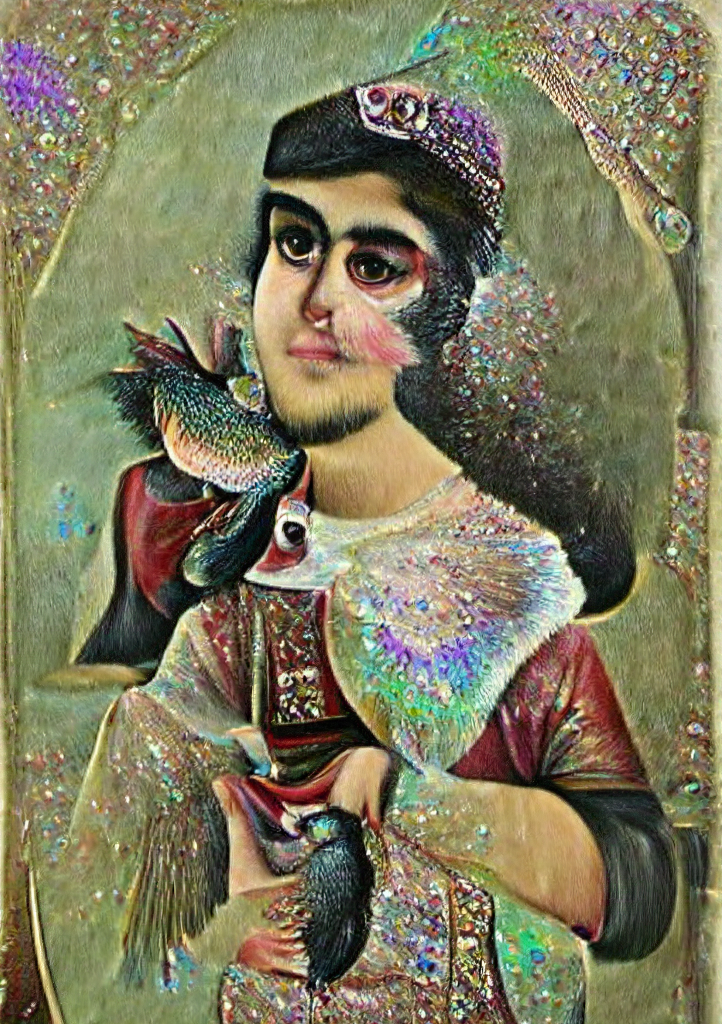
Morehshin Allahyari, Moon-faced (2022). Photo courtesy of the artist.
On view in the show are artworks that deal with these technological erasures: Morehshin Allahyari’s Moon-faced video work uses A.I. to undo the lack of queer Iranian representation in the Western canon; while Andrew Demirjian and Dahlia Elsayed’s The Center for No Center presents a reading room in an alternate universe where European colonial projects never existed.
Stephanie Dinkins’s video installation Conversations with Bina 48 (Fragment 11) airs the artist’s interactions with a social robot, which, though designed to mimic the consciousness of a Black woman, has no meaningful grasp of Blackness or race.
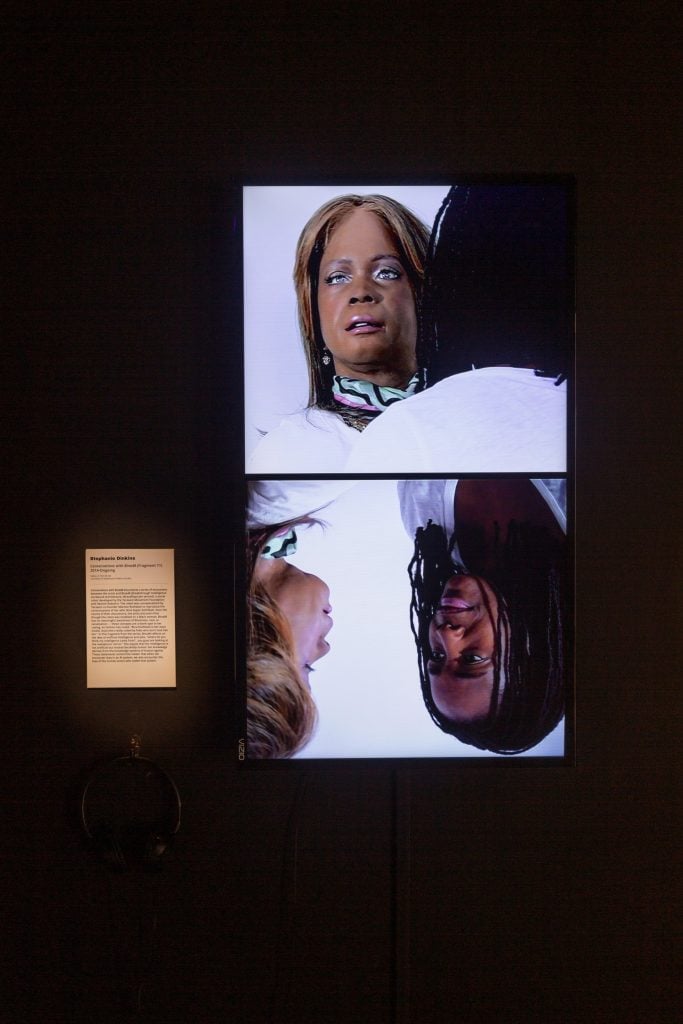
Stephanie Dinkins, Conversations with Bina 48 (Fragment 11) (2014–). Photo courtesy of Ford Foundation Gallery.
The exhibition is a restaging of “Encoding Futures,” which was mounted at Oxy Arts in Los Angeles in 2021. In the time since, A.I. has entered popular discourse with the increasing accessibility of generative models, its potential and harms coming newly into focus. This moment is not lost on the show’s curators.
“The stakes of the same works now seem far less conceptual and abstract and much more penetrating,” said co-curator Meldia Yesayan.
This keenness can be felt in works such as In Discriminate by Mandy Harris Williams, a sound work that unpacks algorithmic bias and discrimination, and The Groove by Niama Safia Sandy, a series of prints that reveal how biometric technologies ill-serve Black communities.
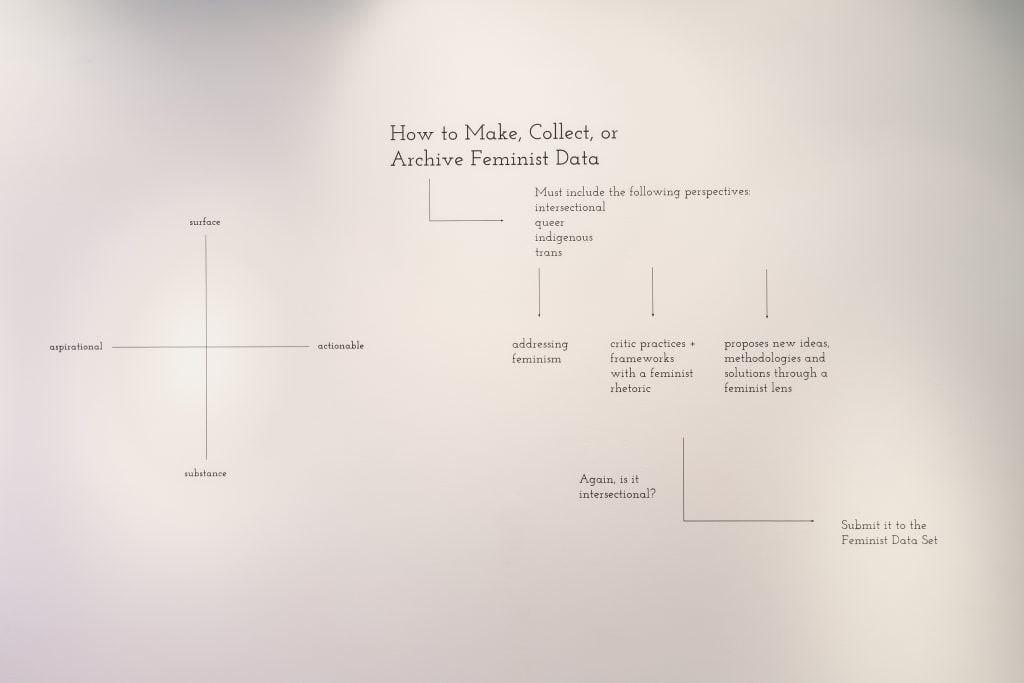
Caroline Sinders, Feminist Data Set (2017–). Photo courtesy of Ford Foundation Gallery.
But the show doesn’t intend to leave its visitors with a bleak view of A.I. futures. Works including Caroline Sinders’s Feminist Data Set and Kite’s Makȟóčheowápi Akézaptaŋ (Fifteen Maps) propose models trained on feminist critique and Indigenous knowledge respectively, offering critical interventions of algorithmic bias.
“Ultimately, our hope with this exhibition is to catalyze folks to engage critically with the various technologies in our midst and their effects, both positive and negative, on our daily lives,” Yesayan said.
“The trajectory of A.I. isn’t scripted in advance. Automated technofutures aren’t a foregone conclusion,” Hakopian added. “There is space for intervening in those futures.”
“What Models Make Worlds: Critical Imaginaries of A.I.” is on view at the Ford Foundation Gallery, 320 E 43rd Street, New York, September 7–December 9. See more artworks in the show below.
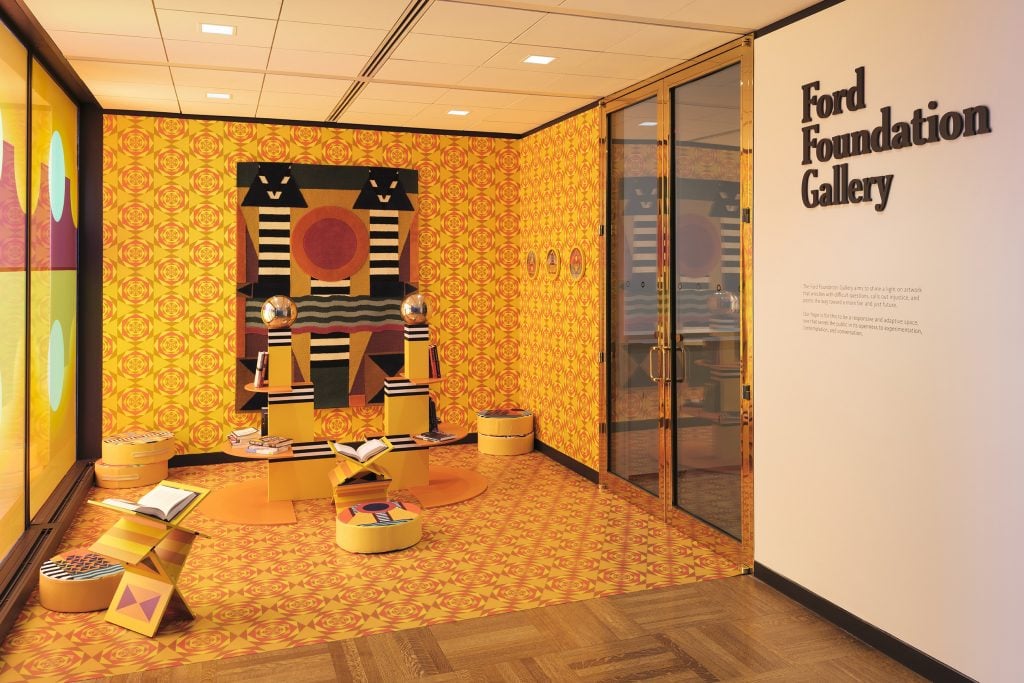
Andrew Demirjian and Dahlia Elsayed, The Center for No Center (2023). Photo courtesy of Ford Foundation Gallery.
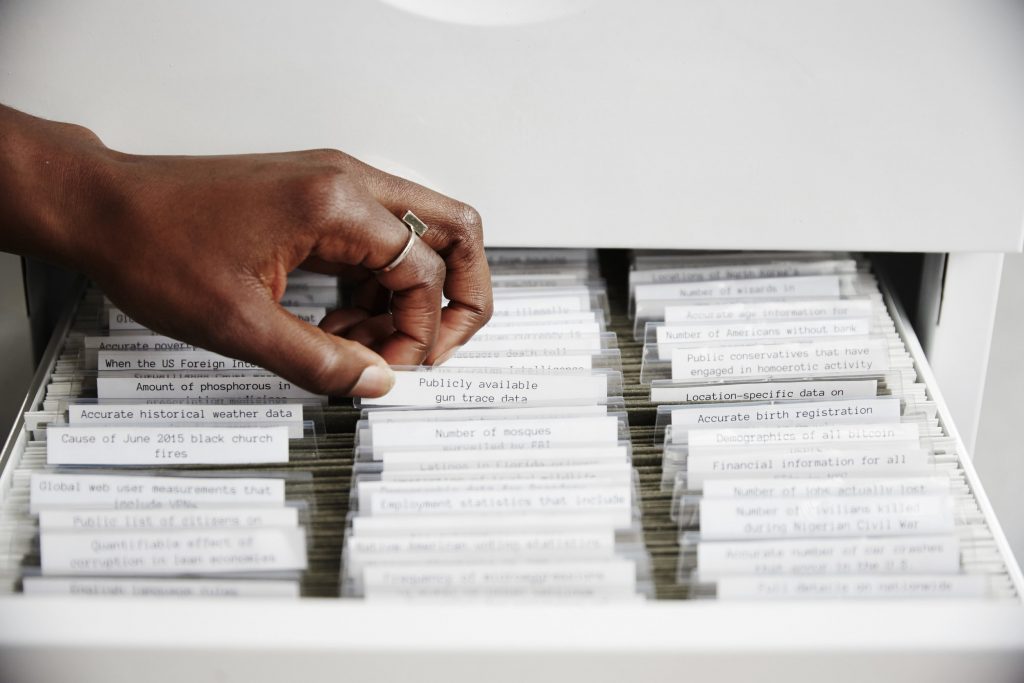
Mimi Ọnụọha, Library of Missing Datasets, version 1.0 (2016). Photo courtesy of the artist.
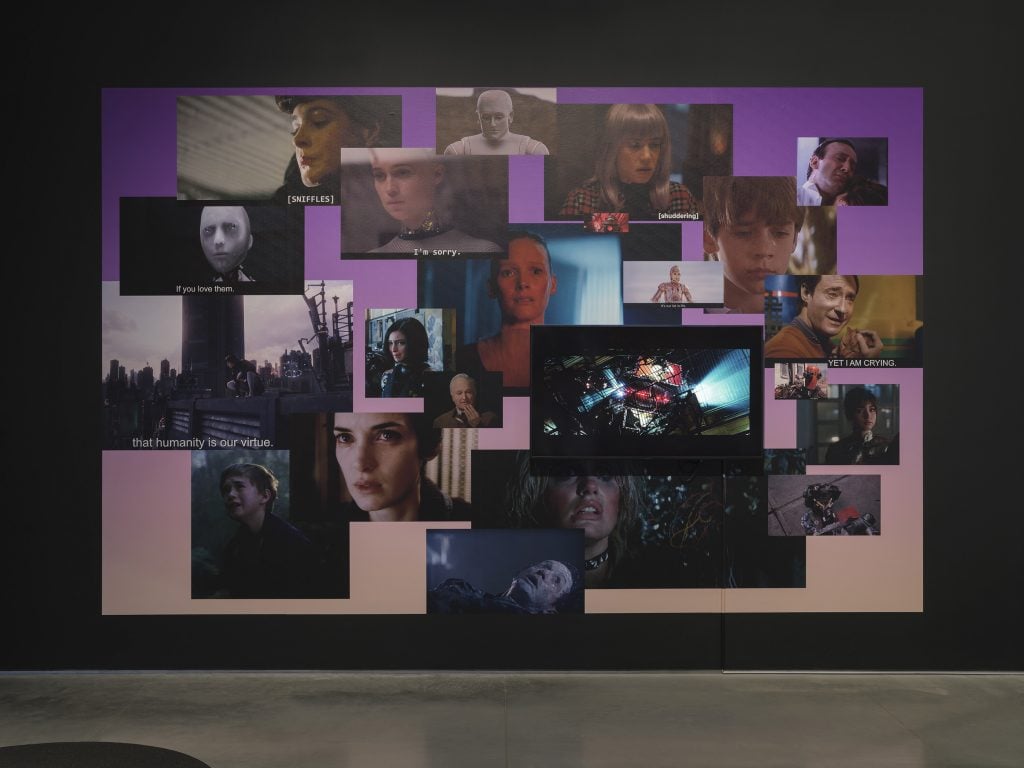
Astria Suparak, Sympathetic White Robotos (White Robot Tears version) (2023 | 2023). Photo courtesy of Ford Foundation Gallery.
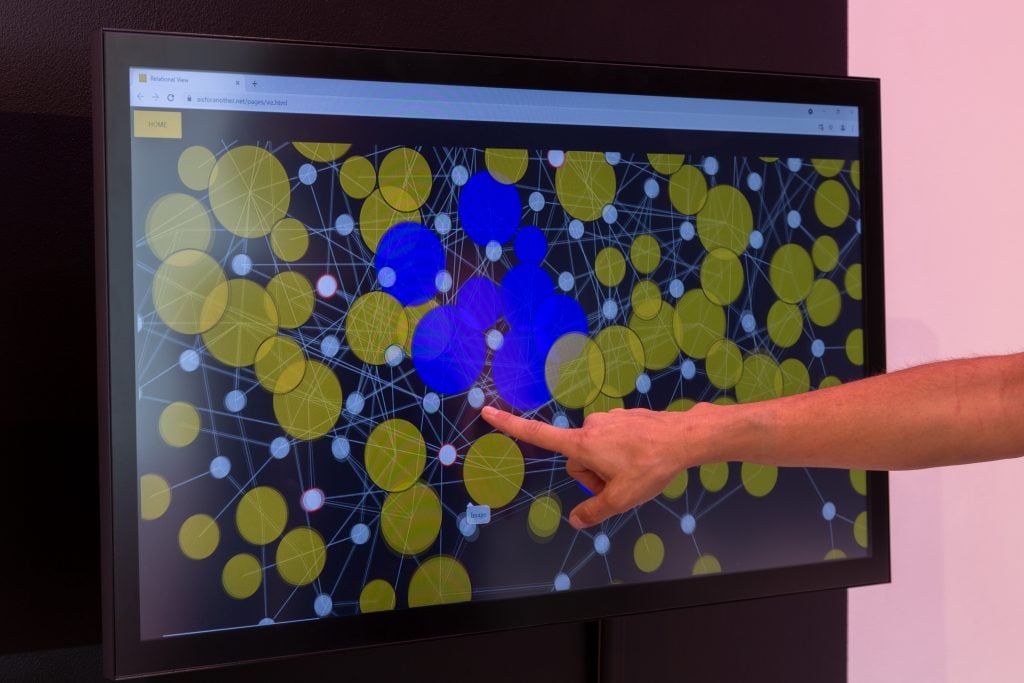
Maya Indira Ganesh with Design Beku, A Is for Another. Photo courtesy of Oxy Arts.
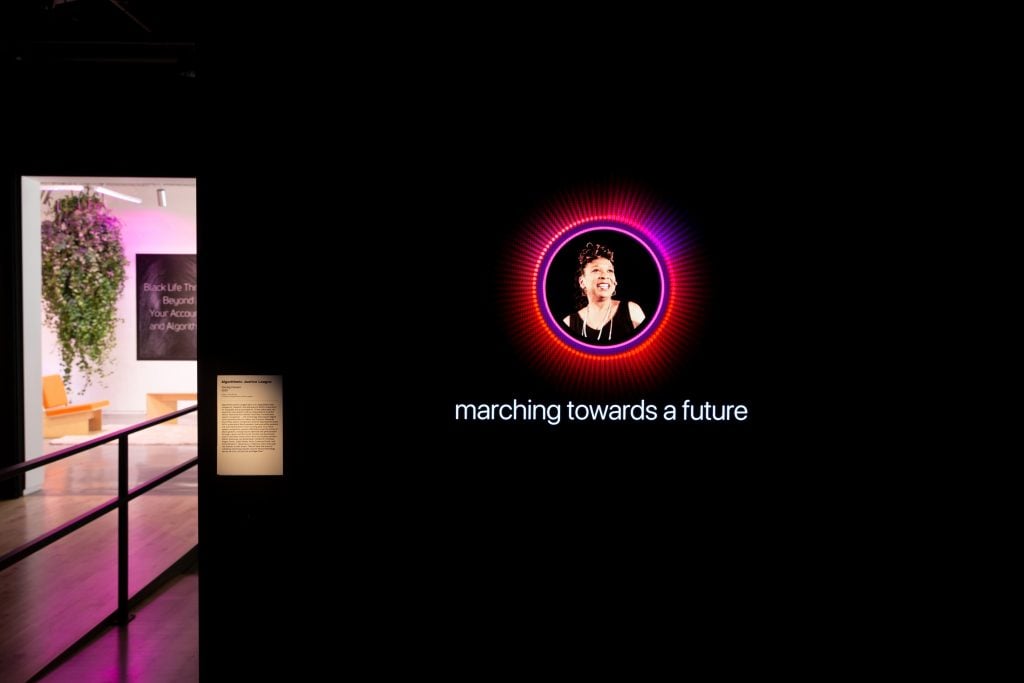
Algorithmic Justice League, Voicing Erasure. Photo courtesy of Oxy Arts.
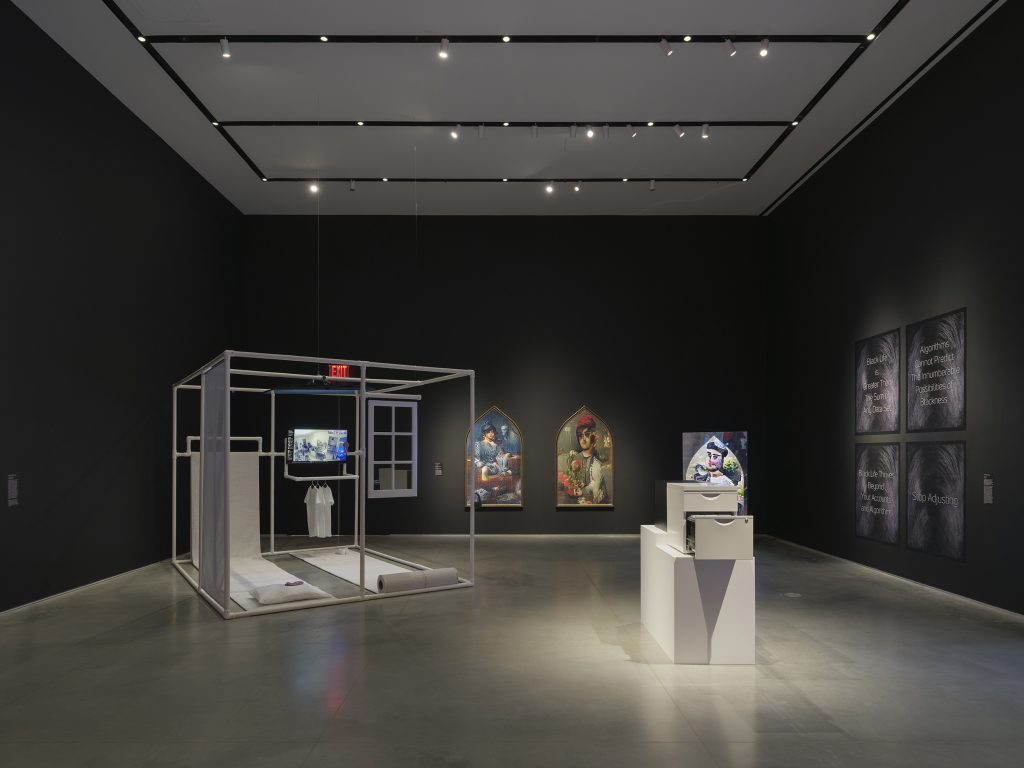
Installation view of “What Models Make Worlds: Critical Imaginaries of A.I.” at Ford Foundation Gallery. Photo courtesy of Ford Foundation Gallery.
More Trending Stories: